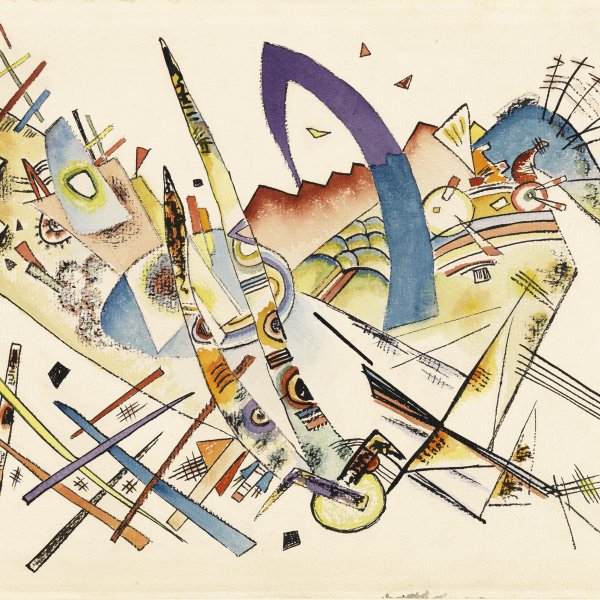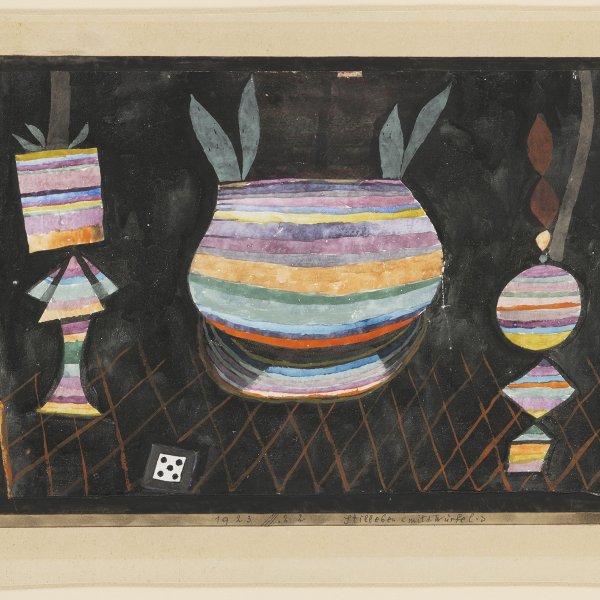Opus 30-1922 (Factory)
In 1922, when Servranckx was beginning to introduce recognizable elements into his painting, he and René Magritte published a programmatic text entitled “L’Art pur: Défense de l’estétique, ” in which both artists acknowledged the importance of the stimulus of “nature.”Although his greatest priority was to produce “pure art, ” Servranckx was not adamant about abstract painting, as he believed that the artist could use planes in depth wherever necessary to achieve greater “expression.”
Technically speaking, the Thyssen-Bornemisza Opus 30 evidences the unpolluted perfection to which “L’Art pur” aspired, and in this respect the verso is highly revealing, as it displays a network of horizontals and verticals drawn by the painter which provide an insight into the rigorous method employed in most of his paintings from this period. As in Opus 7 and Opus 10, also dated in 1922, the subject matter of Opus 30 is the roofs of some factory buildings. The theme is most likely taken from the industrial architecture of the Brussels suburb where the artist lived, but it also expresses the functionalist values declared by Le Corbusier in his writings published in L’Esprit Nouveau.
Paloma Alarcó









